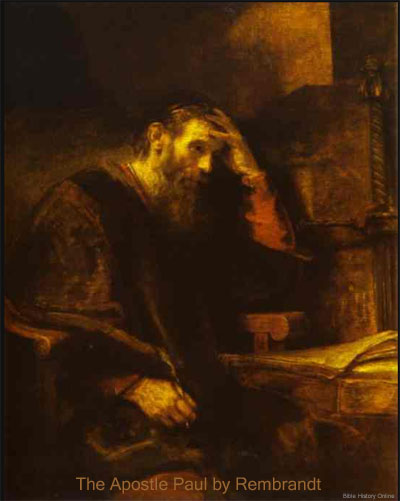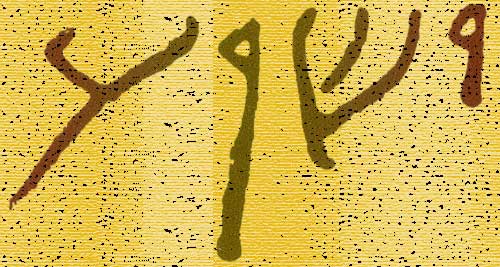11. Peter--"Cephas" in the oldest manuscripts Paul's withstanding
Peter is the strongest proof that the former gives of the independence
of his apostleship in relation to the other apostles, and upsets the
Romish doctrine of Peter's supremacy. The apostles were not always
inspired; but were so always in writing the Scriptures. If then the
inspired men who wrote them were not invariably at other times
infallible, much less were the uninspired men who kept them. The
Christian fathers may be trusted generally as witnesses to facts, but
not implicitly followed in matters of opinion.
come to Antioch--then the citadel of the Gentile Church: where first
the Gospel was preached to idolatrous Gentiles, and where the name
"Christians" was first given
(Ac 11:20, 26),
and where Peter is said to have been subsequently bishop. The question
at Antioch was not whether the Gentiles were admissible to the
Christian covenant without becoming circumcised--that was the question
settled at the Jerusalemcouncil just before--but whether the Gentile
Christians were to be admitted to social intercourse with the Jewish
Christians without conforming to the Jewish institution. The
Judaizers, soon after the council had passed the resolutions
recognizing the equal rights of the Gentile Christians, repaired to
Antioch, the scene of the gathering in of the Gentiles
(Ac 11:20-26),
to witness, what to Jews would look so extraordinary, the receiving of
men to communion of the Church without circumcision. Regarding the
proceeding with prejudice, they explained away the force of the
Jerusalem decision; and probably also desired to watch whether the
Jewish Christians among the Gentiles violated the law, which
that decision did not verbally sanction them in doing, though
giving the Gentiles latitude
(Ac 15:19).
to be blamed--rather, "(self)-condemned"; his act at one time
condemning his contrary acting at another time.
JFB.
The Book of Galatians
Galatians 1:11-12 - But I certify you, brethren, that the gospel which was preached of me is not after man. For I neither received it of man, neither was I taught [it], but by the revelation of Jesus Christ.
Galatians 4:4 - But when the fulness of the time was come, God sent forth his Son, made of a woman, made under the law,
Galatians 5:22-23 - But the fruit of the Spirit is love, joy, peace, longsuffering, gentleness, goodness, faith, Meekness, temperance: against such there is no law.
Galatians in The New Testament - A Brief Overview

Painting of Paul the Apostle by Rembrandt - 1657
Introduction to The Book of Galatians
Brief Summary. Paul instructs the churches that he established in Galatia. He defends his apostleship against the Judaizers who wanted to mix Christianity with the Law of Moses. Paul says that salvation is by grace and not by law.
Summary of The Book of Galatians
Purpose. Paul was so well received by the Galatians that they even looked upon him as an angel or God himself (Galatians 4:14). The churches that he established had become strong churches, yet they were severely affected by the false teaching of the Judaizers. Paul deals with their false doctrines and their attacks at his apostleship, and shows clearly how Christianity cannot be mingled with Jewish laws and circumcision. He reminds them that his authority and ministry was not passed on through the other apostles, but came directly through Jesus Christ. Regarding Christianity he uses sound doctrine, Scripture, and allegory to show how Christianity is greater than the law. The true purpose of the law was to point to Jesus Christ, and the gospel does not see any difference between the Jew, the Greek, the free man, the slave, nor male nor female. Paul's message in the book of Galatians regarding Christianity and its relationship to the law of Moses is theologically brilliant, and some have referred to it as the Christian Declaration of Independence.
Audience. Scholars agree that paul was writing to the churches in Galatia which he established on his first missionary journey.
Authorship. Paul the Apostle was the author of the book of Galatians. Scholars agree that Paul was the author of the epistle to the Galatians. Paul refers to his own name as "Paul" twice in Galatians (Galatians 1:1 and 5:2). The second reference is very conclusive that it was Paul writing. There were several references to the life of Paul which can easily be harmonized with the Book of Acts.
Date. it is very difficult to be certain about the date of the epistle to the Galatians. Most scholars give it a 50 or 55 AD date.
Place Written. It is also difficult to be certain about the location where Paul wrote his epistle to the Galatians. Most likely it was written from either Syrian Antioch before the Council of Jerusalem (Acts 15) or it could have been written from Ephesus on Paul's second or third missionary journey.
Outline of the Book of Galatians
Paul's Message of the Gospel - Chapter 1:1-10
Paul Defends Justification by Faith - Chapters 1:11-2:21
Paul Explains Justification by Faith - Chapters 3:1-4:31
Paul Explains Applying Justification by Faith 5:1-6:18

The Name Jesus In Ancient Hebrew Text
"Yeshua" in First Century Hebrew Text. This is how the name "Jesus"
would have been written in ancient Hebrew documents. The four letters or
consonants from right to left are Yod, Shin, Vav, Ayin (Y, SH, OO, A).
Jesus is the Greek name for the Hebrew name Joshua or Y'shua which means
"The LORD or Yahweh is Salvation".
Galatians Maps and Resources
Map of the Roman Empire (14 A.D.) - This map reveals the Roman Empire during the time shortly after the birth of Jesus, in 14 AD at the time of the death of Augustus. The order which prevailed in this extensive empire, the good military roads, and the use of Koine Greek as the general language of culture throughout the area were among the factors which multiplied the rapid spread of the Gospel of Jesus Christ. (Color Map)
Map of Paul's First Missionary Journey (48 A.D.) - This map reveals the areas in Asia Minor where Paul visited in his first missionary journey. Around 48 AD, in the springtime, Paul and his companions Barnabas and Mark were sent on a mission from the church in Antioch. This would be the first of Paul's Missionary Journey's. (Color Map)
Map of Paul's Second Missionary Journey (51 A.D.) - This map reveals the areas in Asia and Greece where Paul visited in his second missionary journey. Paul re-visits a couple cities in Asia, one of which was Lystra where he was stoned and left for dead a few years earlier. He later has a vision that leads him over to Greece and Paul and his companions travel and minister in various cities in Greece (Philippi, Thessalonica, Berea, Athens and Corinth. Later Paul returns to Ephesus and finally to Caesarea and Antioch. (Color Map)
Map of Paul's Third Missionary Journey (54 A.D.) - This map reveals the areas in Asia and Greece where Paul visited in his third missionary journey. On Paul's third missionary journey he returned to the cities he had first visited on his first missionary journey. During this time he decided to remain in Ephesus for about 3 years, and this city was the main focus of his activities and an important Christian community (Acts 19). (Color Map)
Map of the New Testament World - This map reveals the "Nations" within the ancient world during the first century A.D., the time of the New Testament. The map includes the areas of Israel, Asia, Greece, and Italy. (Color Map)
Map of New Testament Asia - This map shows the cities within
Asia Minor during the first century A.D., the time of the New
Testament. The map includes the principal cities of Asia
including Tarsus, Ephesus, and Colossae, and provinces like
Galatia and Pamphilia. (Color Map)